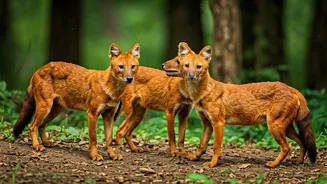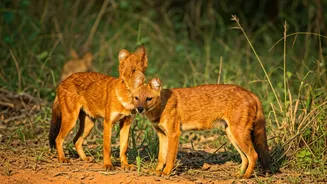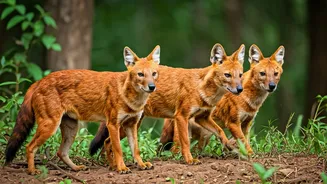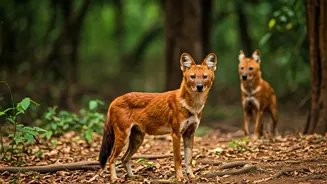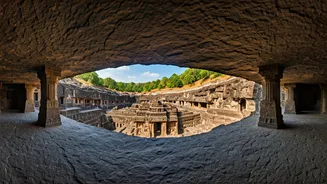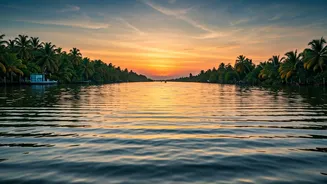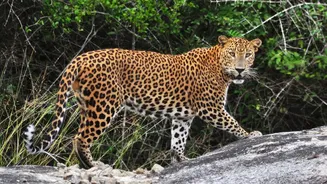Dholes: Wild Dogs
The dhole, also recognized as the Asiatic wild dog, is a canid species native to Central, South, and Southeast Asia. They are social animals, living in packs
that often hunt cooperatively. Classified as endangered, dholes face significant threats due to habitat loss, prey depletion, and competition with other predators. Conservation efforts are crucial to protect their existence. The presence of dholes indicates a healthy ecosystem, as they are apex predators and their presence keeps the balance.
Spotting Them: Parks
Several national parks in India provide a habitat for the endangered dhole. These parks play a crucial role in the conservation of the species. Among the noteworthy ones are the Bandhavgarh National Park in Madhya Pradesh, known for its high tiger population and diverse wildlife, and the Kanha National Park, also in Madhya Pradesh, which is a prime dhole habitat. Further south, Nagarhole National Park in Karnataka is home to a sizable dhole population. In the northeast, Namdapha National Park in Arunachal Pradesh also shelters dholes, although sightings can be rare due to dense vegetation. Periyar National Park in Kerala, also provides habitat to dholes along with other species.
Bandhavgarh: Madhya Pradesh
Bandhavgarh National Park is located in the Umaria district of Madhya Pradesh and is known for its biodiversity. This park provides a safe haven to the dhole. Besides the dhole, this park boasts a significant tiger population and various other species like leopards, gaurs, and a variety of bird species. The undulating terrain, dominated by the Vindhya hills, provides a rich habitat suitable for both the predators and their prey. Conservation efforts here emphasize habitat preservation and patrolling to minimize poaching, creating a conducive environment for the dhole and other wildlife to thrive.
Kanha: Another Option
Kanha National Park, also situated in Madhya Pradesh, is a key habitat for the dhole, contributing to their conservation. It is an important part of the Central Indian highlands. The park has grasslands, deciduous forests, and diverse fauna. Along with dholes, Kanha is home to tigers, leopards, Indian wild dogs, and a variety of deer and bird species. Effective conservation measures include anti-poaching initiatives, habitat management, and community engagement to ensure the sustainability of the dhole population and overall biodiversity.
Nagarhole: Karnataka's Jewel
Nagarhole National Park, located in Karnataka, supports a notable dhole population, contributing significantly to their preservation. Its strategic location within the Western Ghats enhances its ecological importance. The park has lush forests, numerous streams, and a range of wildlife. Besides dholes, you'll find tigers, elephants, gaurs, and a variety of birds. Conservation strategies involve reducing human-wildlife conflicts and preventing poaching to protect the dholes, and promote the integrity of the ecosystem.
Namdapha: Northeast Sanctuary
Namdapha National Park, nestled in Arunachal Pradesh, offers a refuge for dholes within the northeastern region. Its remote location and dense forest provide shelter for various wildlife, including dholes. The terrain is varied and includes a unique blend of fauna and flora. Although dhole sightings can be difficult due to the dense vegetation, the park remains important for its overall conservation significance. The challenges in protecting the park include habitat fragmentation, illegal logging, and human activities. Conservation initiatives focus on community awareness, strict enforcement of wildlife laws, and minimizing human impact on the forest ecosystem.
Periyar: Kerala's Pride
Periyar National Park in Kerala provides habitat for the dhole. It is known for its picturesque landscape and biodiversity. The park is characterized by a reservoir, evergreen forests, and grasslands. You can find tigers, elephants, sambar deer, and a variety of birdlife. The conservation efforts here include anti-poaching patrols, monitoring wildlife populations, and promoting responsible tourism to minimize disturbance to the natural environment. These efforts are crucial to the survival of the dhole population and maintaining the park's ecological balance.
